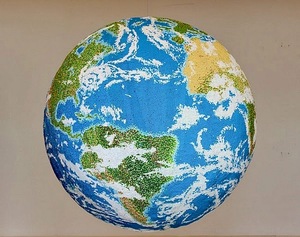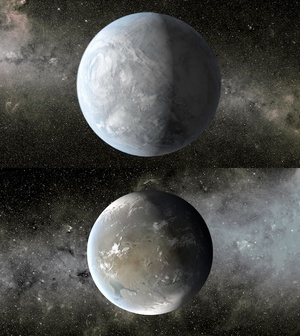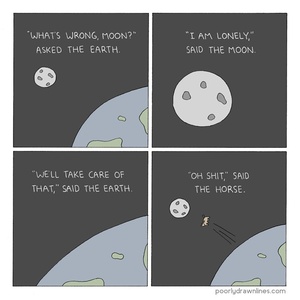Tag Archives: earth
Blue Moon
at



Early One Morning – a giant globe made from matchsticks by artist Andy Yoder, who spent two years hand-painting individual matches, gluing each one to a foam, cardboard and plywood sphere then finally spraying the whole thing with flame retardant (come on now. He’s not a total eejit).
The piece goes on display this summer at the PULSE New York Contemporary Art Fair.
A short film by Tom Scott based on this Blogleech post which suggests that humans, not aliens, are the truly terrifying species of the galaxy.
Telescope
atTelescope is a visual sci-fi treat directed and edited by Colin Davis with the VFX mastery of Wes Ball (he of the wonderful post apocalyptic animation RUIN)
The year is 2183. Earth is dead. With all evidence of organic life lost, a cosmic archaeologist travels faster thanlight into deep space to capture images of the once vibrant planet. When his vessel is damaged he must take matters into his own hands, risking his life to witness humanity’s lost home.

 Two just-released pictures of the Earth and the Moon. The first taken by NASA’s Cassini-Huygens spacecraft as it orbited Saturn – 900 million miles away – last Friday.
Two just-released pictures of the Earth and the Moon. The first taken by NASA’s Cassini-Huygens spacecraft as it orbited Saturn – 900 million miles away – last Friday.
The second, taken last Saturday by the MESSENGER spacecraft orbiting Mercury – a mere 61 million miles away – shows us from the opposite direction.
Which is so not our good side.
(Hat tip: Mauriac)
A Ted-Ed animation wherein Scott Gass explains the immensity of the ‘one big ocean’ of planet Earth.
For the sake of perspective, as the US Geological Survey showed with a memorable graphic last year, every last drop of fresh water, sea water, ground water, water vapor and water in biological matter would form a sphere just 1,384km in diameter.



 (Pix (top to bottom): Kepler-22b, Kepler-62e, Kepler-62f and Kepler-69c)
(Pix (top to bottom): Kepler-22b, Kepler-62e, Kepler-62f and Kepler-69c)
NASA’s planet-hunting Kepler spacecraft, has already discovered more than 100 planets outside our solar system in the first four years of its mission, including, last year, a possible ‘ocean world’ called Kepler-22b.
Lately, its deep space telescope has identified three exoplanets of similar size to Earth which appear to have the right temperatures to sustain life. Two of them (Kepler-62e and Kepler-62f) orbit the Kepler-62 star 1200 light years from Earth with estimated surface temperatures of -3°C and -65°C respectively (though the chilliness may be tempered by the blanketing effect of as-yet-unknown atmospheres.)
The third planet, Kepler-69c, orbiting a different star, has a balmy estimated surface temperature of 27°C. Scientists also speculate that it could be covered with liquid, but not necessarily water.
We want to believe.
Three New Exoplanets Might Have Right Temperature for Life (Wired)
In this clip from an interview with CNN, astrophysicist Neil Degrasse Tyson explains the theoretical protection strategy that will be used should a giant asteroid threaten the extinction of humanity.
They won’t be nuking that sucker, either. It’ll be more ‘touchy-feely’ than that.











